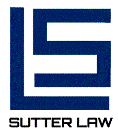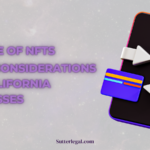This article defines and explains the important role of disclosure schedules in mergers and acquisitions (M&A).
Table of Contents
- Introduction
- Purpose of Disclosures in M&A Transactions
- Key Components of M&A Disclosures
- Regulations Governing M&A Disclosures
- Influences of M&A Disclosures on Market Behavior
- Background and Significance of M&A Disclosure Schedules
- More Details: What are M&A Disclosure Schedules?
- The Risks of a Bad M&A Disclosure Schedule
- Conclusion
Introduction
M&A Disclosures, central to any Mergers and Acquisitions (M&A), provide crucial information that influences the decision-making processes of various stakeholders.
They hold strategic insights into the details, benefits, and risks associated with the transaction, ensuring transparency and regulatory compliance.
Purpose of Disclosures in M&A Transactions
M&A disclosures aim to present an accurate portrayal of the firms involved, offering insights into their financial health, strategic objectives, and potential risks.
These disclosures enable investors to make informed decisions, thereby promoting a fair, orderly, and efficient market.
Key Components of M&A Disclosures
M&A Disclosures are comprehensive documentation that includes three primary components: financial disclosures, legal disclosures, and management discussions and analysis.
Financial disclosures provide a quantitative review of a company’s performance. Legal disclosures give details about any legal issues faced by the companies.
Management discussions and analysis provide insights into the strategic objectives and factors driving the company’s performance.
Regulations Governing M&A Disclosures
With the potential for exploitation and the significant influence of M&As on markets, regulatory bodies like the Security and Exchange Commission (SEC) in the U.S. have set guidelines for M&A disclosures.
This mandates companies to provide accurate and comprehensive information relevant to the transaction, and non-compliance can lead to serious legal consequences.
Influences of M&A Disclosures on Market Behavior
M&A disclosures carry significant weight in shaping the direction of investor behavior and overall market sentiment.
A clear and comprehensive disclosure can reinforce investor confidence, whereas a flawed disclosure can evoke skepticism and potentially derail a deal.
Background and Significance of M&A Disclosure Schedules
It is common practice that, pursuant to an M&A agreement, the buying company will pay a significant portion of the sales price at closing and the balance will be held in escrow for a period of time, typically one year or two years, depending on the terms negotiated by the parties.
If the seller’s disclosure schedules documents supporting and supplementing a seller’s representations and warranties fail to list a liability, and that liability later becomes subject to litigation, the buyer will take that money out of escrow and thus out of the pockets of the selling party.
However, a skillful M&A attorney can carefully craft the buyer’s disclosure schedules to avoid lawsuits and losing funds from escrow.
More Details: What are M&A Disclosure Schedules?
When a buying company is performing due diligence pursuant to a merger with a target company, the selling company uses disclosure schedules to tell the buying company material information about the seller’s business.
Specifically, disclosure schedules contain documents that support and supplement a seller’s representations (assertions of fact) and warranties (promises about the future).
Disclosure schedules are usually included at the end of the stock purchase agreement, asset purchase agreement, or merger agreement; and are incorporated into the particular M&A agreement by reference.
The schedules often contain information about, or copies of material agreements such as intellectual property agreements, employment agreements, stock purchase agreements, commercial leases, etc.
Disclosure schedules also provide details on any exceptions to a warranty made in a merger or acquisition agreement.
For example, an M&A agreement may state that the seller is not involved in any litigation, except as outlined in the disclosure schedules. Details of the exception would then be divulged in the disclosure schedules.
The Risks of a Bad M&A Disclosure Schedule
Poorly crafted disclosure schedules can create significant exposure to liability for sellers and their stockholders.
If a selling company does not fully disclose material information in the disclosure schedules, it can create problems after closing such as lawsuits, arbitration, or losing escrow funds.
Therefore, it is critical to select experienced and detail-oriented attorneys to prepare your disclosure schedules such as to insulate your company from liability to the furthest extent possible.
You may also want to read M&A How to maximize shareholder value.
Conclusion
Call the experienced M&A attorneys at Sutter Law today to ensure that your M&A transactions are carefully crafted to the best of industry standards.
We have helped sellers and buyers alike close significant M&A transactions in San Francisco, Silicon Valley, and around the world.






